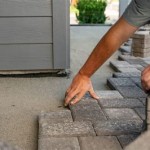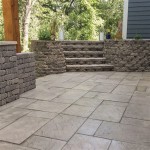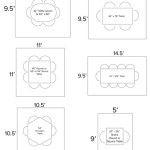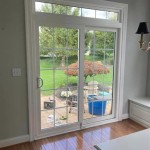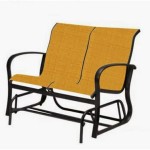How to Replace a Patio Door Glass Insert
Patio doors, providing access to outdoor spaces and natural light, often become focal points in homes. However, the glass inserts within these doors are susceptible to damage from impacts, weather, or simply age. Replacing a cracked, broken, or fogged-up patio door glass insert is a task that, while requiring careful execution, can be undertaken by homeowners with a moderate level of DIY experience. This article provides a comprehensive guide to successfully replacing a patio door glass insert, covering preparation, removal, installation, and safety considerations.
Understanding the Scope of the Project and Assessing the Damage
Before commencing the replacement process, a thorough assessment of the damage is crucial. The type and extent of the damage will dictate the replacement strategy and the necessary materials. For instance, a hairline crack might be a cosmetic issue, while a shattered glass insert represents a significant safety hazard requiring immediate attention. Fogging between the panes of double-pane glass indicates a seal failure, necessitating a complete glass insert replacement. This is because the insulating properties have been compromised.
Furthermore, examining the door frame and the surrounding area for any signs of additional damage is critical. Warped frames or damaged weather stripping may require further repair or replacement, adding to the overall project scope. Identifying the manufacturer and model of the patio door can also aid in sourcing a compatible replacement glass insert. This information is often found on a sticker or stamp located on the door frame or the original glass itself.
Once the damage has been assessed, it is necessary to determine the dimensions of the glass insert. This can be done by carefully measuring the visible glass area within the frame. Measure both the width and the height, and record these measurements accurately. It's highly recommended to measure the thickness of the glass as well, specifically if dealing with multi-pane glass units. These measurements are vital for ordering the correct replacement.
Finally, consider the type of glass desired for the replacement. Options include standard clear glass, tempered glass, laminated glass, and low-E glass. Tempered glass is designed to shatter into small, relatively harmless pieces upon impact, making it a safer option, particularly in areas prone to accidents. Low-E glass offers improved energy efficiency by reducing heat transfer. The choice of glass type should reflect the homeowner's safety concerns, energy efficiency goals, and budget.
Preparation and Necessary Tools
Proper preparation is paramount to a successful glass insert replacement. This involves gathering the necessary tools and materials, as well as creating a safe working environment. Failure to adequately prepare can lead to delays, injuries, or damage to the door frame or the replacement glass.
The following tools are typically required for this project: Safety glasses, heavy-duty work gloves, a putty knife or flat pry bar, a hammer or mallet (preferably rubber), a measuring tape, a screwdriver (both flathead and Phillips head), a utility knife, sandpaper, cleaning supplies (glass cleaner and lint-free cloths), and caulking gun with exterior-grade sealant. If removing broken glass, a shop vacuum cleaner is also essential for safely removing debris.
In addition to the tools, the following materials will be needed: The replacement glass insert (with the correct dimensions and glass type), shims (small pieces of wood or plastic for leveling), glazing points (if applicable, depending on the frame type), and exterior-grade sealant or caulk. It is recommended to purchase these materials from a reputable supplier to ensure quality and compatibility.
Before starting the work, clear the area around the patio door, both indoors and outdoors. Cover the floor with drop cloths or protective sheeting to prevent damage from debris. Ensure adequate lighting in the work area. If the project involves working with broken glass, take extra precautions to protect yourself and others from injury. Dispose of broken glass properly in a designated container that is puncture-resistant.
Finally, it's often recommended to have a helper assist with the removal and installation of the glass insert, especially for larger doors. The weight of the glass can be significant, and having an extra set of hands can prevent accidents and ensure proper alignment.
Removing the Old Glass Insert
The method for removing the old glass insert depends on the type of patio door frame. Common frame types include wood, vinyl, and aluminum, each requiring a slightly different approach. Regardless of the frame type, safety should be the primary concern throughout the removal process.
For wood frames, the glass insert is typically held in place by wooden stops or molding, secured with nails or screws. Carefully remove these stops using a putty knife or flat pry bar. Insert the putty knife between the stop and the frame, and gently tap it with a hammer or mallet to loosen the stop. Avoid applying excessive force, which could damage the frame. Once the stops are removed, carefully lift out the old glass insert. If the glass is broken, wear heavy-duty gloves and use a shop vacuum to remove any remaining shards. Glazing points might also be present to help secure the glass. These small metal triangles can be gently removed with pliers before taking out the glass.
For vinyl frames, the glass insert is often held in place by a vinyl bead that snaps into the frame. Locate the seam where the bead meets the frame, and use a putty knife or flat screwdriver to carefully pry it loose. Work your way around the perimeter of the bead until it is completely detached. With the bead removed, the glass insert can be lifted out. Vinyl beads can become brittle over time, so handle them with care to avoid breakage. Sometimes heat (from a hair dryer) can help soften the vinyl to make it more pliable and easier to remove without damage.
For aluminum frames, the glass insert may be held in place by a similar system to vinyl frames, using beads that snap into place. Alternatively, some aluminum frames use a screw-in system with perimeter screws, which need to be unscrewed before the glass can be removed. Be particularly careful with aluminum frames, as they can be easily scratched or dented. Check also for drain holes at the bottom of the frame, and ensure these are not blocked by debris. Remove existing sealant carefully with a utility knife before attempting to remove the glass itself. Any remaining sealant residue on the frame should be scraped away before installing the new glass.
Once the old glass insert is removed, inspect the frame for any damage or deterioration. Repair any issues before proceeding with the installation of the new glass. Clean the frame thoroughly with a brush to remove any dirt, debris, or old sealant.
Installing the New Glass Insert
The installation of the new glass insert is the reverse of the removal process, but attention to detail is critical to ensure a weathertight seal and a professional-looking result. Proper alignment, secure fastening, and effective sealing are essential.
Before installing the new glass, apply a bead of exterior-grade sealant around the perimeter of the frame. This sealant will create a waterproof barrier and prevent air leakage. Position the new glass insert carefully into the frame, ensuring that it is centered and aligned correctly. For larger panes, use shims to ensure the glass is level within the frame. This prevents undue stress on the glass and frame.
Secure the glass insert in place using the appropriate method for the frame type. For wood frames, re-install the wooden stops or molding, using new nails or screws. Ensure that the stops are flush with the frame and that there are no gaps. For vinyl frames, snap the vinyl bead back into place, starting at one corner and working your way around the perimeter. Ensure that the bead is fully seated and that there are no gaps. For aluminum frames, re-install the beads or perimeter screws, ensuring that they are tightened securely. Do not overtighten the screws, as this could damage the frame or glass.
After securing the glass, inspect the perimeter for any gaps or imperfections. Apply additional sealant as needed to ensure a weathertight seal. Smooth the sealant with a wet finger or a specialized caulking tool for a professional finish. Allow the sealant to cure completely according to the manufacturer's instructions before exposing the door to the elements. Once the sealant has cured, clean the glass thoroughly with glass cleaner and lint-free cloths.
Final Inspection and Maintenance
After completing the installation, conduct a thorough inspection to ensure that the glass insert is properly installed and sealed. Check for any leaks or drafts around the perimeter of the glass. Open and close the patio door to ensure that it operates smoothly and that there is no binding or rubbing.
Regular maintenance is essential to prolong the life of the glass insert and the patio door. Clean the glass regularly with glass cleaner and lint-free cloths. Inspect the sealant around the perimeter of the glass periodically and re-apply if necessary. Lubricate the door hinges and tracks to ensure smooth operation. Address any minor issues promptly to prevent them from escalating into more significant problems.
By following these steps, homeowners can successfully replace a patio door glass insert and restore the beauty and functionality of their doors.

How To Add Glass Inserts Exterior Doors Diy Guide Zabitat

Detailed Diy Tutorial How To Replace Glass In French Door

Door Glass Window Replacement

All About Glass Front Doors Including Door Replacement

Can You Replace Patio Door Glass The Same Day Valleywide

How To Install Sliding Glass Doors Homeserve Usa

How To Replace A Broken Door Glass Insert In Your

Door Glass Insert Replacement Yellow Window Grills

Paradigm Windows Removing Stationary Panel On Patio Door

How To Replace Rollers In Aluminum Sliding Glass Doors
Related Posts


